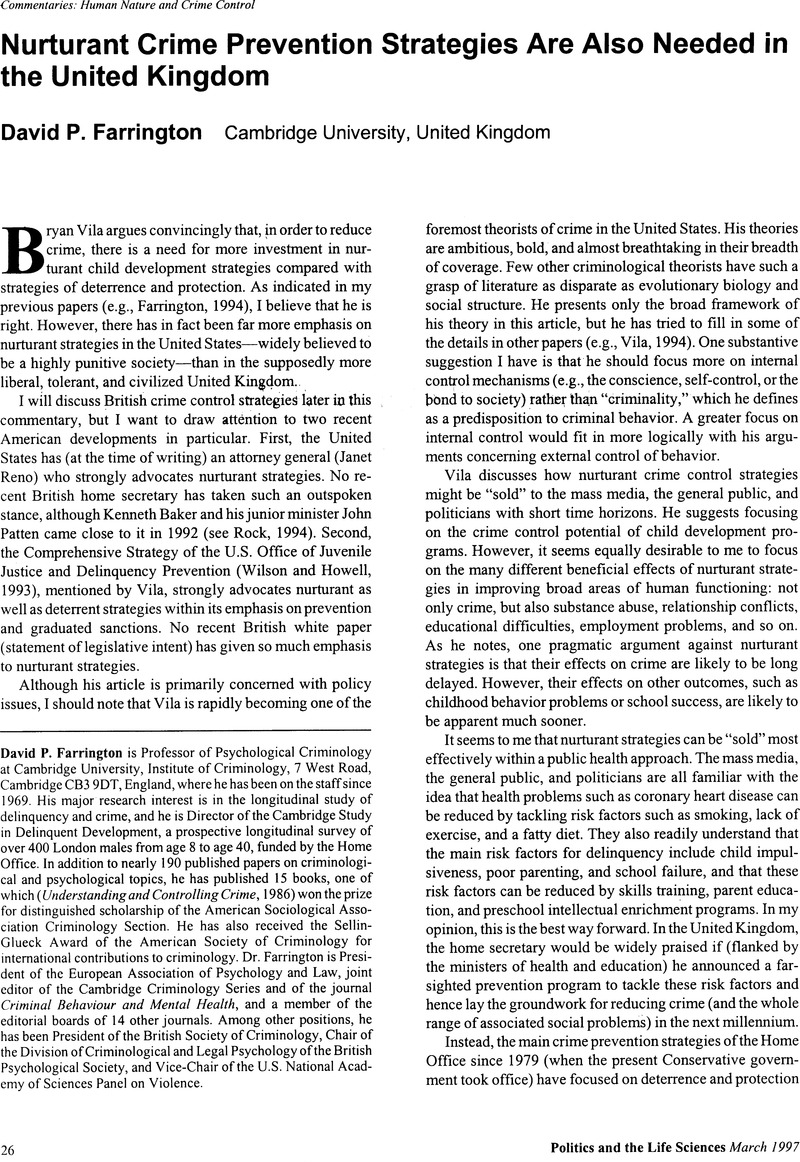No CrossRef data available.
Article contents
Nurturant Crime Prevention Strategies Are Also Needed in the United Kingdom
Published online by Cambridge University Press: 17 May 2016
Abstract
An abstract is not available for this content so a preview has been provided. Please use the Get access link above for information on how to access this content.

- Type
- Roundtable Commentaries
- Information
- Copyright
- Copyright © Association for Politics and the Life Sciences
References
Farrington, D.P. (1994). “Early Developmental Prevention of Juvenile Delinquency.” Criminal Behaviour and Mental Health 4:20927.CrossRefGoogle Scholar
Farrington, D.P. (1996). Understanding and Preventing Youth Crime. York: Joseph Rowntree Foundation.Google Scholar
Farrington, D.P. (1997). “Evaluating a Community Crime Prevention Programme.” Evaluation 3:In press.Google Scholar
Hawkins, J.D. and Catalano, R.F. (1992). Communities That Care. San Francisco: Jossey-Bass.Google Scholar
Howell, J.C., Krisberg, B., Hawkins, J.D., and Wilson, J.J., eds. (1995). A Sourcebook on Serious, Violent and Chronic Juvenile Offenders. Thousand Oaks, CA: Sage.Google Scholar
Rock, P. (1994). “The Social Organization of a Home Office Initiative.” European Journal of Crime, Criminal Law, and Criminal Justice 2:141–67.CrossRefGoogle Scholar
Vila, B. (1994). “A General Paradigm for Understanding Criminal Behavior: Extending Evolutionary Ecological Theory.” Criminology 32:311–59.CrossRefGoogle Scholar
Wilson, J.J. and Howell, J.C. (1993). Comprehensive Strategy for Serious, Violent and Chronic Juvenile Offenders. Washington, DC: Office of Juvenile Justice and Delinquency Prevention.Google Scholar




